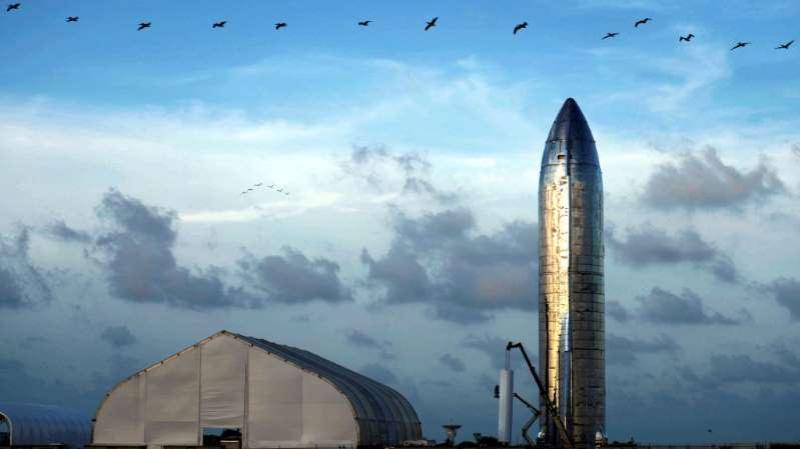Elon Musk says his Starship will fly to orbit in six months


When Elon Musk leads engineering meetings at SpaceX, he says, “the thing I am most impressed with is, what did you undesign?”
Which is to say, what complications did engineers remove? How did they simplify the vehicle?
The cutting is going well, judging by Musk’s annual presentation on how SpaceX , founded with the goal of making humans a multi-planetary civilization, intends to do that. A crowd of employees sporting “Occupy Mars” and “Nuke Mars” t-shirts were on hand to cheer on the boss, 11 years to the day after the company’s first successful launch of a rocket to orbit.
Previous iterations of the event had been delivered in Mexico , in Australia and, fittingly, on Reddit . This time, however, Musk did it in front of actual test hardware at SpaceX’s facility in Cameron County, Texas. And, with a typically aggressive schedule, Musk says that a prototype of the vehicle could make it to orbit in just six months.
“If the design takes too long to build, it’s a bad design,” Musk said, twice repeating a management maxim: “If the schedule is long, it’s wrong; if it’s tight, it’s right.”
SpaceX already flies two kinds of rockets, the Falcon 9 and the Falcon Heavy, for NASA, the US Air Force, and private satellite operators. This next-generation project is a rocket that could mount crewed expeditions to the moon or Mars.
The final version of the fully reusable Starship will be capable of taking 150 tons of payload into orbit, more than twice as much as the Falcon Heavy, currently the most powerful rocket in operation on the planet. It’s pressurized cabin will be roughly equivalent in volume to the International Space Station. But Starship will require a reusable booster, which Musk calls Super Heavy, to leave Earth with any practical amount of cargo or passengers onboard.
To get there, SpaceX has made some radical choices. The rocket will have an unusual stainless steel structure, which Musk says is better suited to withstanding the extreme environment of space. That decision has allowed the company to build the prototypes outdoors here in Texas and near Cape Canaveral in Florida, with two teams racing each other.
Last month in Texas, a test vehicle called Starhopper used a single flight engine to fly 150 meters (492 ft) into the air and then land again.
On the left, the prototype Starship. On the right, an unflown Falcon 1.
Musk said that after both work sites had completed two versions of the Starship, they would begin work on the booster required for regular operations. Right now, he said, his company is making one of the engines for the ship, called a Raptor, every eight to 10 days, and hoped to be making one a day sometime in the first quarter of next year. Each Starship will be powered by five Raptors, while the booster will require as many as 37.
The rocket is designed to return to earth in an extreme maneuver, with Musk comparing it to a skydiver. After entering the atmosphere, it falls downward on its belly, before flipping back at an angle to use its rockets to land gently. Given the explosive trial and error required to teach the Falcon boosters to return safely to earth, this new method is likely to resulting in some spectacular tests.
There’s still much to learn before the rocket will go into use, however. Asked about the kind of life-support system required by the vehicle or the number of crew it would support, Musk suggested that more work would need to be done developing efficient mechanisms to recycle oxygen and water. For its biggest plans of seeding a city on Mars or a scientific base on the Moon, the company will need to perfect a technique for refueling the spacecraft in orbit, which it has practiced in part by docking it spacecraft with the International Space Station.
While Musk is promising super-fast development, past experience says the rocket is unlikely to fly to orbit or beyond in the next year. Still, he says this prototype was built in just five months, a rapid pace, and that the design was only finalized in October 2018.
The Starship is the largest of several heavy rockets under development in the US. Jeff Bezos’s space company is developing the New Glenn, which it hopes to debut in 2021. Boeing is building the Space Launch System for NASA, which is about to begin a final period of integrated testing ahead of a hoped-for first flight also expected in 2021.




Maybe it's just me but I think we live in very exciting times